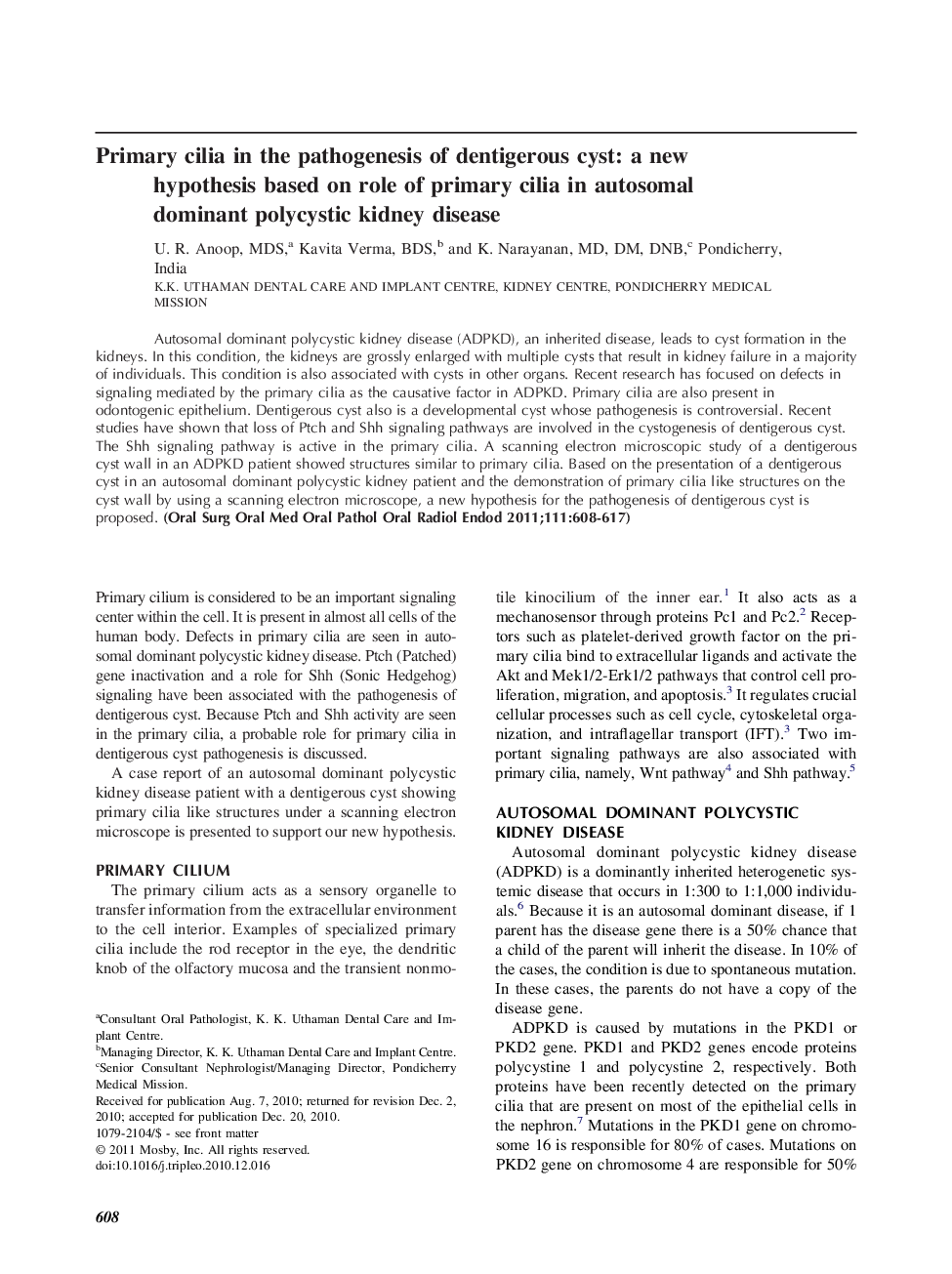| Article ID | Journal | Published Year | Pages | File Type |
|---|---|---|---|---|
| 6059882 | Oral Surgery, Oral Medicine, Oral Pathology, Oral Radiology, and Endodontology | 2011 | 10 Pages |
Autosomal dominant polycystic kidney disease (ADPKD), an inherited disease, leads to cyst formation in the kidneys. In this condition, the kidneys are grossly enlarged with multiple cysts that result in kidney failure in a majority of individuals. This condition is also associated with cysts in other organs. Recent research has focused on defects in signaling mediated by the primary cilia as the causative factor in ADPKD. Primary cilia are also present in odontogenic epithelium. Dentigerous cyst also is a developmental cyst whose pathogenesis is controversial. Recent studies have shown that loss of Ptch and Shh signaling pathways are involved in the cystogenesis of dentigerous cyst. The Shh signaling pathway is active in the primary cilia. A scanning electron microscopic study of a dentigerous cyst wall in an ADPKD patient showed structures similar to primary cilia. Based on the presentation of a dentigerous cyst in an autosomal dominant polycystic kidney patient and the demonstration of primary cilia like structures on the cyst wall by using a scanning electron microscope, a new hypothesis for the pathogenesis of dentigerous cyst is proposed.
